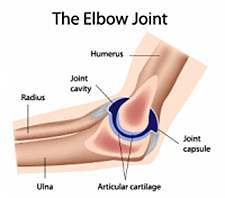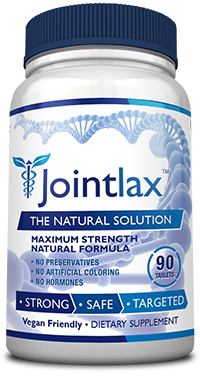Get The Facts About Joint Pain

It is estimated that nearly 1 in 5 U.S. adults suffer from some form of arthritis, which is a leading cause of chronic joint pain (1). This widespread condition can make daily activities challenging, and many individuals experience ongoing discomfort. Whether it's the nagging ache of a sore knee after a long day or the sharp pain in your elbow from overuse, joint pain is very uncomfortable. Some joint pain is temporary and can be relieved with little treatment, but for those suffering from chronic joint pain, finding ways to ease it can be very challenging.
In order to understand the causes of joint pain, it is important to know what joints are and how they work. This knowledge can provide insight into why a joint might hurt and help you take precautionary measures during activities like playing sports, working, or performing everyday tasks.
What Are Joints?

Joints are where two bones meet, allowing for movement. They consist of bones, cartilage, tissue, muscle, and fluid. Cartilage covers the ends of bones, cushioning them and preventing friction. This cartilage acts as a shock absorber, reducing impact during movement. Tissue forms the inner wall of the joint capsule, creating a seal that holds in fluid. This fluid provides nutrients and lubrication to the cartilage and joint surfaces, enabling smooth movement.
Joints are categorized by their motion type: gliding, hinge, ball-and-socket, and pivoting. Because of their critical role in movement and weight-bearing, joints are prone to pain, swelling, and other issues.
Causes and Symptoms Associated With Joint Pain
Some of the most common causes and symptoms associated with joint pain are listed below:
Stress occurs when a joint is used excessively or subjected to too much or constant pressure. This can lead to aching and stiffness in the joint.
Inflammation refers to swelling of the joint and surrounding area, often resulting from overuse. Both stress and inflammation can contribute to joint pain.
Redness and warmth of the skin may occur at or around the joint area. The skin might feel warm to the touch, or the joint may produce a burning sensation felt internally, often linked to inflammation.
Stiffness in a joint happens when its motion is restricted. Difficulty in fully extending the joint without pain is commonly referred to as stiffness, which is one of the most aggravating symptoms of joint issues.
Injuries can lead to joint pain. Sprains and dislocations are particularly painful and may lead to long-term problems if not healed properly, potentially resulting in chronic pain.
Occupational Hazards can also cause joint pain. Standing for long periods stresses weight-bearing joints, while prolonged sitting can cause knee discomfort.
Excessive Weight can stress lower joints like the ankles, knees, and hips, causing pain due to the added pressure on these weight-bearing joints.
Joint Pain And Daily Life

Joint pain can significantly impact your daily activities. Pain and stiffness may lead some to believe that avoiding movement will prevent discomfort. While resting a joint may help in some situations, it isn't always the solution. You've likely heard the phrase, "Use it or lose it." In certain cases, gentle exercise can be more effective than rest in relieving stiffness and easing pain.
Dealing with joint pain can be challenging and frustrating, potentially affecting your quality of life by limiting your daily routine and activities. When even simple tasks become difficult, it can make everyday life feel overwhelming. However, there are steps you can take to help manage and potentially reduce joint pain, stiffness, and swelling. It's about finding the right balance between rest, movement, and proper nutrition to keep your joints in optimal condition.

What Can You Do To Help Your Joints?
Maintaining a healthy, well-balanced diet is essential for overall health, including joint health. A diet rich in fruits, vegetables, and nutrients like omega-3 fatty acids, vitamin D, and calcium can support your joints and overall well-being. Consulting a nutritionist or healthcare professional can help you find the right dietary plan that suits your individual needs.
Exercise plays a crucial role in overall well-being, maintaining a healthy body weight, and supporting joint health and flexibility. Low-impact exercises like walking or swimming for 30 minutes a day can keep your joints in good shape while also improving flexibility. Additionally, incorporating strength training can further support joint stability.
Rest is equally important. Sleep is when your body rejuvenates and repairs itself. Aim for 6-8 hours of sleep each night to support your body's health and the maintenance of your joints.
Try not to overwork your joints. If you have to sit for long periods of time, stand up and walk around for a few minutes. If you have to stand for long periods of time, try to squeeze in some squats or sit for a short spell.






 Jointlax™'s formulation of effective ingredients and strong name recognition have brought praise from both customers and health professionals alike. To learn more about the research and data behind Jointlax™ , please visit our "
Jointlax™'s formulation of effective ingredients and strong name recognition have brought praise from both customers and health professionals alike. To learn more about the research and data behind Jointlax™ , please visit our "





